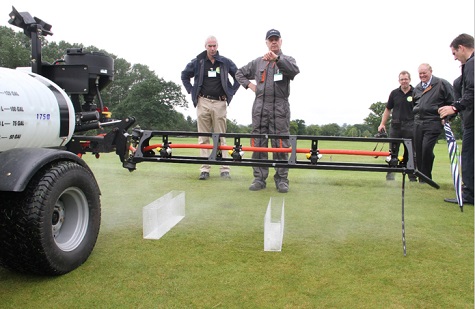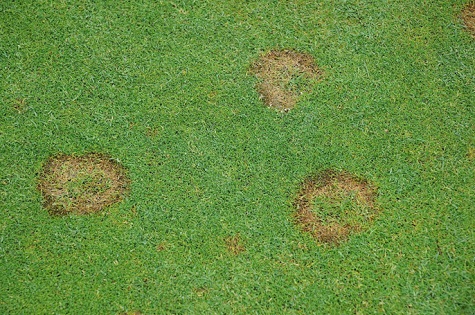

In the first of this series of articles, we sought to get a clearer definition of what sustainability is and what it means to an organisation, especially in the amenity horticulture sector. Sustainability comprises three pillars or components namely economic viability, environmental protection and social equity. The definition of these is important when any organisation seeks to become more sustainable, or indeed seeks to deliver more sustainable products and services to its customers. The remaining articles on this subject will now look more closely at various sub sectors of, and activities in amenity, and those providing services to them which hopefully will help all readers in their own search for sustainability.
Previously we considered Sustainability In Practice, Sustainability At The Sharp End, Sustainability In Supply, Managing Weeds Sustainably, Innovation & Sustainability, Life Cycle Analysis and Sustainability, Implications for Training & Education and Taking A Global Look At Sustainability.
This month we consider the UK National Action Plan for sustainable weed, pest and disease management and how it impacts on practice in the amenity sector here in the UK.
Across the four nations of the UK, although there are a range of policy documents applying as to the use of pesticides and weed, pest and disease management generally, the basic principles are the same and all seek to implement the legislative and voluntary measures embodied in the current UK National Action Plan. This plan was first established in 2013, when we were still members of the EU, and was in response to the European Directive on the Sustainable Use of Plant Protection Products. Each EU country was required to produce such plans for implementation in their own nations. On the UK leaving the EU, the National Action Plan (NAP) remains the core document although a review process started in the UK some 2 years ago and, whilst much delayed, a new UK plan is expected by the end of this year.
A previous article considered some of the implications of the current NAP in terms of amenity practice. This article though focusses on issues arising from the extensive consultations leading to the soon to be released new NAP and the core issues and challenges that are likely to arise. The overriding stated aims of the revised NAP will be to continue to increase uptake of Integrated Pest Management (IPM) and sustainable crop protection, in line with Defra’s 25 Year Environment Plan, the Welsh Minister’s Natural Resources Policy, The Environment Strategy for Scotland, and the goals of the Environment Strategy for Northern Ireland, to protect and enhance the environment for future generations. In the amenity sector this translates into key aims of an integrated approach to weed, pest and disease management and both implementing and demonstrating sustainable practice.

There are five core areas that have formed the consultation on the new NAP. These are as follows:
They fit within key government priorities, whether national or UK wide, as given below although the emphasis within each nation can vary.
The thinking in terms of the new revised UK national action planning has five stated key areas, namely, ensuring robust regulation to protect health and the environment, supporting the development and uptake of Integrated Management approaches, ensure those who use PPPs do so safely and sustainably, setting targets to support reduction of risks and improving statistics and indicators and ensuring effective work with others to deliver the NAP goals.
So let us look now briefly at each of these five areas of the NAP and what they mean.
Ensure robust regulation
A stand out message, emphasised in the consultations leading up to the new NAP, are that the UK governments will work within, and develop, our existing regulatory framework to make the system simpler for users, while maintaining levels of protection for health and the environment. They will support the development of the knowledge needed to ensure that regulation of pesticides across the UK promotes positive innovation and change and they will review operation of regulation for bio-pesticides, to encourage greater uptake of these within integrated management (IPM) approaches.
Support the development and uptake of integrated management (IPM)
The key messages here are that they will work with stakeholders to ensure all pesticide users will have access to the information and support they need to integrate IPM approaches fully within their respective systems, so that pesticides are used sustainably, as part of a targeted and integrated control system. Furthermore, they will support the development of IPM approaches which provide maximum opportunity to protect or enhance the environment whilst being fit for purpose.
Integrated approaches are core to all thinking in terms of weed, pest and disease management and a key objective in terms of seeking more sustainable practice.

Ensure those that use pesticides do so safely and sustainably
The core objectives here are that they will look to enhance the system of enforcement for pesticides, with more frequent checks on selected businesses to ensure compliance. They will ensure that individuals are prevented from purchasing pesticides authorised for professional use where the end user does not have appropriate training and certification, and will consider implementing legislation to introduce increased requirements at the point of sale if necessary. They will make sure that pesticides classed for use by professionals continue to be used correctly so that risks to the environment are minimised and risks to human health are avoided. They will work with partners to promote clear messages for amateur users to encourage non-chemical alternatives, wherever possible, and will provide improved advice on safe usage and disposal.
Changes have already been made within this area. The recent implementation of OCR regulations requiring all sellers and users of plant protection products (PPPs) to register their stores and types of plant protection product use by law is an example. There has also been increased resource provided to HSE to allow more on-site inspections. All those not registered or not meeting standards face legal consequences.
Set targets to support reduction of risks and improve statistics and indicators
The commitment here is to establish a set of clear targets to support the reduction of risk associated with pesticide use, ensure pesticide policy helps to deliver existing commitments on biodiversity and water and to develop improved metrics for IPM uptake and updated environmental indicators for pesticides providing a suitable baseline against which to establish appropriate reduction targets. Such an approach is already in place for fertilisers leading to restrictions on use.
Ensure effective work with others to deliver the NAP goals
In essence this advocates a joint industry wide approach to implement more sustainable policies both in the use of PPPs and in the practices generally of weed, pest and disease management. Within the amenity sector, the Amenity Forum acts as the voluntary initiative promoting best and sustainable practice. It is vital that this body, along with relevant trade organisations, are supported. The industry and sector must stand together and ensure standards are met and, more importantly, implemented in the best possible way.
Of course, until the full new NAP is finally published, the detail still remains largely unknown but the key principles are clear from the statements above. Those operating and managing in the sector are likely to face more controls seeking to minimise their use of PPPs, move them towards integrated planning in terms of weed, pest and diseases and requiring them to demonstrate sustainable practice. It is very important that all users and all involved in amenity management keep fully up to date with changes.
Many amenity organisations already are implementing many aspects of sustainable practice but are not always aware of it. To pre-empt likely future challenges, organisations may wish to undertake audits of current practice, particularly related to sustainability, and certainly review all current practices in terms of acquiring, storing, using and disposal of any plant protection products used. Being able to demonstrate a fully integrated approach to any weed, pest and disease issues is another important factor. Have all methods of control been fully considered and each situation assessed in terms of what objective is being sought? A previous article in this series looked at the stages of integrated management planning and provided an important template for use.
Undoubtedly, we are in a time of challenge and change, and certainly uncertainty in terms of political direction. However the drivers towards sustainable practice will not change, albeit time scales and levers for their implementation may do so. Being prepared, pro-active rather than reactive, is certainly the best policy. Well managed amenity and sports locations have nothing to fear provided they are responsive and ensure all is done to meet the policy objectives underlying the implementation of the UK National Action Plan. Key to this is demonstrating sustainable practice.
‘’Change is good. It is also often hard. But to succeed in business, you must run toward it, as when you are finished changing, you are finished,’’ Ben Franklin.
The penultimate article in this particular series will summarise discussions with some key influencers across the various sub sectors of amenity on what sustainable practice means to them and their organisations. The final article in December will seek to summarise all the key issues raised in the series and suggest a template for implementing sustainable practice for use by amenity and sports organisations.